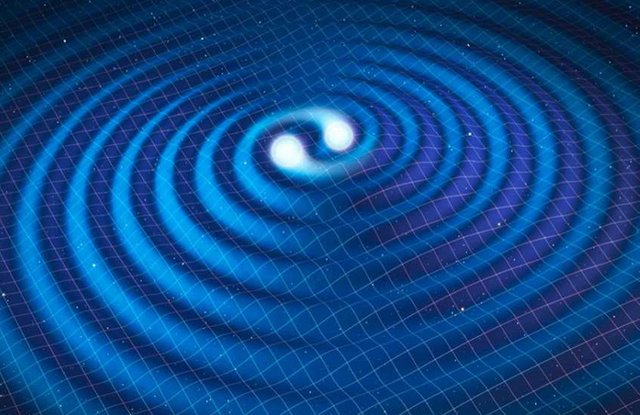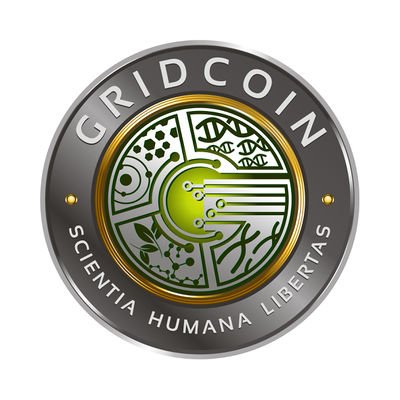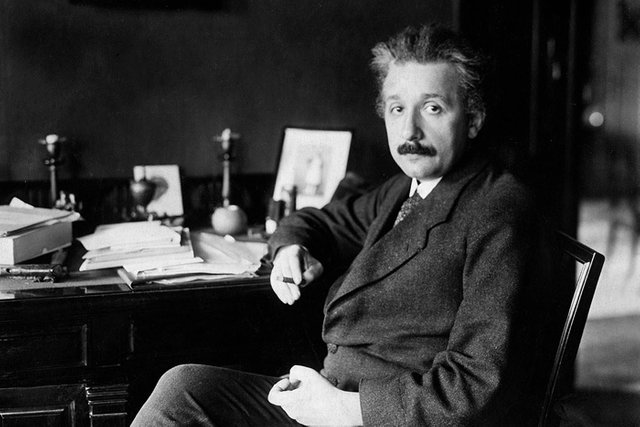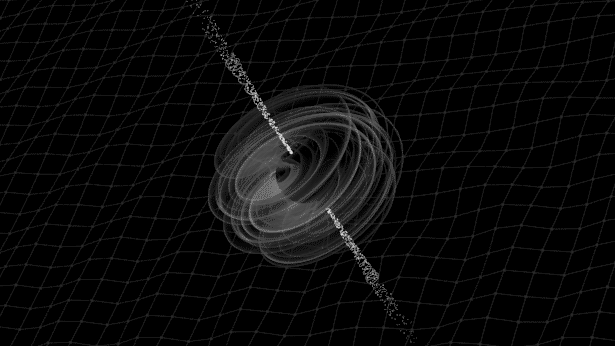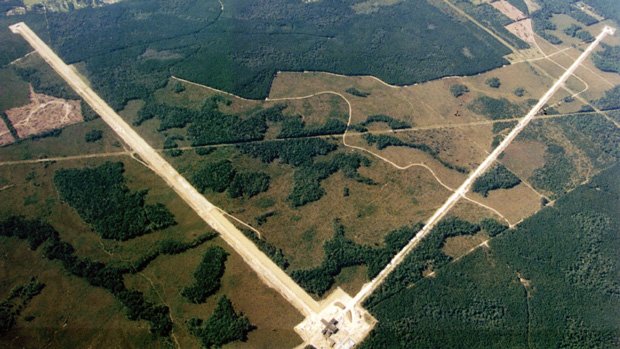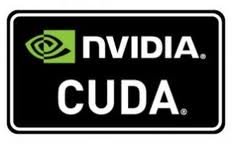Gridcoin GPU mining (4): Searching for Gravitational Waves
Gridcoin - crypto mining through computational science
Welcome to the fourth installment of Gridcoin GPU mining series! In previous articles, we have covered Gridcoin GPU mining in general, PrimeGrid (and the discovery of new prime-numbers) and MilkyWay@home (with differences between single and double precision floating point operations).
Now one might ask: Why so many articles? Can't you describe your hashing algo in few sentences and be done with it?
Well, that's exactly the point - there is no hashing algorithm and there is no repetitive Proof-of-Work hashing with Gridcoin. Gridcoin is mined through 28 different BOINC projects, performing various scientific computations, from astrophysics to biomedicine, greatly varying in scope (mapping the galaxy or studying protein folding at molecular level), preferred hardware (CPU, GPU, AMD, Intel, Nvidia) and type of calculations (integer, FP32, FP64).
So most definitely, there is a lot of material for plenty of articles on the topic of Gridcoin mining. In fact, there is so much of it, it's certainly beyond my knowledge and experience to write comprehensively about so many different scientific and computing endeavors. Not to mention that new BOINC projects are appearing all the time, as computational science is expanding rapidly to all fields of human knowledge and all types of scientific research ("the more we learn about the universe, the more it appears to be based on mathematical laws"). But I'll do what I can, so in this article, I present you one of the most popular and fascinating BOINC projects: Einstein@home.
The project
Einstein@home was released back in 2005. as one of the earliest BOINC projects, backed and supported by many scientific institutions and organizations across the world. It was developed by LIGO Scientific Collaboration (LSC) and Max Planck Society (MPG) and is hosted by the University of Wisconsin–Milwaukee (USA) and the Max Planck Institute for Gravitational Physics (Albert Einstein Institute, Hannover, Germany). Albert Einstein Institute is the largest research institute in the world specializing in general relativity and in this context, the name of their project is obviously aptly chosen, capturing the public attention (a necessity if you want to run a massively distributed computing project) and covering the scientific aspects at the same time. Einstein@home is also supported by the American Physical Society (APS), the US National Science Foundation (NSF) and a number of international organizations.
NSF is an independent U.S. government agency responsible for promoting science and engineering through research programs and education projects. With an annual budget of $7 billion, many scientific projects are funded through NSF (and many popular BOINC projects too).
Of course, Einstein@home is also whitelisted by Gridcoin, meaning that crunching for Einstein@home also earns you Gridcoins (i.e. mining through computational science). The project is protected by SSL, very stable, with very little down time and with a vast supply of workunits. Over 500 000 BOINC volunteers have run or are running Einstein@home on their computers. Without any doubt, Einstein@home is one of the most renowned and established BOINC projects ever.
Albert Einstein lent his name to this BOINC project. Can it live up to the reputation of the most famous physicist ever?
The science - Gravitational Wave search
Well, gravitational waves have been finally detected recently, so is this search already over? Not quite. True, scientists have detected gravitational waves passing through Earth on two occasions so far, but these waves were created by the violent spiraling collision of two black holes.
GIF animation of two black holes colliding, producing some powerful gravitational waves
Rather than looking for such dramatic outbursts of gravitational waves, Einstein@home uses your computer's idle time to look for far quieter, but continuous signals that are emitted by fast-spinning neutron stars. The goal is to extract such continuous signals from the background noise by observing for long stretches of time (and requiring a lot of computational power). The discovery of such a continuous gravitational signal would open up a new window on the universe and usher a new era in astronomy - observing the outer space using gravity itself.
Artist's impression of a fast-spinning neutron star with a strong magnetic field and continuously emanating some less intense gravitational waves (depicted as wavy ripples). The long-term goal of the Einstein@home project is to make the first direct detections of such ripples (i.e. continuous gravitational-wave emissions).
Einstein@home is using data from the LIGO (Laser Interferometer Gravitational-Wave Observatory) detectors. To put it simply, when a gravitational wave passes through such a detector, the space-time is altered and the laser beam is slightly disturbed. Through some very sensitive instruments and various computational analyses, it's possible to detect and measure such disturbances.
LIGO detector in Livingston, Louisiana, USA. Gravitational waves were first observed here on September 14, 2015. emanating from the collision of a pair of black holes. Einstein@home is, on the other hand, looking for weaker, continuous gravitational wave emissions which are much harder to detect and are computationally most demanding.
LIGO detector in Hanford (WA) which detected the same gravitational wave on September 14, seven milliseconds after the detector in Louisiana, confirming Einstein's theory that gravitational waves travel through space at the speed of light.
So far, Einstein@home hasn't detected any continuous gravitational emissions. But, the recent discovery of gravitational waves tells us that the sensitivity of our instruments is now probably getting close to the level required for such a detection. By running Einstein@home on your computer, you could actually become one of the first persons to discover a new celestial body through gravitational waves only (and volunteer computing). True citizen science at work.
Citizen Science - help make science happen by volunteering for a real research project
The hardware
Einstein@home gravitational wave search is currently a CPU application only (full name: Multi-Directed Continuous Gravitational Wave search). GPU versions are in the works. During previous runs, Einstein@home OpenCL/CUDA applications were known for moderate GPU loads, suitable even for PCs which don't have high-end cooling systems. Since Einstein@home computations are rather complex, it isn't possible to offload them to GPU completely - GPUs are designed for massively parallel computing, which is often applicable for simple tasks only.
Nevertheless, previous GPU Gravitational Wave search applications (so called S6CasA, because the search was directed at Cassiopeia A supernova remnant) were definitely complex stuff: a combination of FP32 and FP64 OpenCL computing workloads, using about 400 MB of video RAM and a lot of video-memory bandwidth (384-bit bus or wider was recommended). Additionally, S6CasA GPU applications used one CPU core and about 400 MB of 'regular' RAM for computations which couldn't be offloaded to GPU. This also required a lot of bandwidth between the CPU and the GPU, so performance also depended on the speed of your PCI-Express interface (PCI-E 3.0 systems being about 10-15% faster than PCI-E 2.0). But since one part of the code always ran on CPU, GPU was never 100% loaded resulting in only moderate GPU workloads (as mentioned before) and, in turn, lower heat output and lower operating temperatures (always a problem when running a powerful air-cooled graphic card at high workloads for extended periods of time). Overall, Nvidia GPUs usually yielded better performance with Einstein@home. The new GPU Gravitational Wave search applications will probably fall into same categories as described in this section, so you are prepared now :)
In 2009. Einstein@home released a CUDA-optimized application, becoming one of the first BOINC projects to support GPU computing
The conclusion
Besides gravitational wave search, Einstein@home is also looking for fast-spinning neutron stars in the electromagnetic spectrum. But that's really another story with completely different science behind it, so we will talk about it in the next article. I will also tell you about the great efforts Einstein@home is undertaking to reward its crunchers and how even an average user, contributing to science only with an inexpensive home PC, can end up in the Astrophysical Journal, honored as a valued contributor to modern astrophysics.
In the meantime, why not participate yourself? Even one CPU core reserved for crunching BOINC and Einstein@home can in turn lead to significant discoveries (and earn you some Gridcoins). Machines used for mining Proof-of-Work cryptocurrencies are usually very powerful and consuming a lot of electric energy, however the general public still recognizes very little actual benefits of Proof-of-Work hashing, the purpose of which is often too abstract for individuals outside the crypto-world.
However, everyone realizes the benefits of cutting edge scientific research. Associating the idea of crypto-mining with the idea of computational science would surely be an important breakthrough for the whole crypto-sphere and would in many ways validate the idea of crypto to the wider public.
